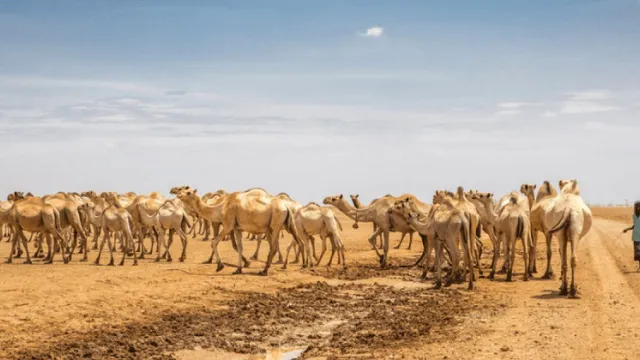Study finds two new Brucella variants posing risk to livestock, humans in Kenya

Study finds two new Brucella variants posing risk to livestock, humans in Kenya
There are two new Brucella species circulating in several livestock hosts and humans in Kenya, a new research shows.
The findings, published in CGSpace, a repository of agricultural research outputs, paves the way for a targeted control programs for brucellosis disease in the endemic zones.
The study, molecular epidemiology of Brucella species in mixed livestock - human ecosystems in Kenya, shows that Brucella abortus and Brucella melitensis are the dominant strains affecting cattle, sheep, goats, camels and humans.
Brucellosis is a disease caused by a group of bacteria from the genus Brucella that affects both humans and animals.
Brucellosis is often spread when people eat raw, contaminated animal products especially milk, and or through contact with fluids of infected animals.
Read also: Rice farmers in Mwea acquire skills to control destructive apple snails
A team of researchers from the International Livestock Research Institute (ILRI) and partners, conducted the study in the heavily pastoral areas of Narok and Marsabit counties in Kenya.
They collected serum samples from 228 cattle, 162 goats, 158 sheep, 49 camels and 257 humans from the two counties. Information on age, location and history of abortion or retained placenta were obtained for the sampled livestock. Data on age, gender and location of residence were also collected from the people.
The study established associations between Brucella species and the different vulnerable hosts, finding evidence of possible cross transmission of Brucella species in areas where close interaction between herds occurs.
The congregation of different animals around watering points, keeping of mixed herds, and sharing of grazing sites rises the chances of cross transmission of Brucella, the research shows.
Brucella abortus is most prevalent in cattle and camels, while infection in sheep and goats was mainly associated with Brucella melitensis.
Humans, however, are exposed to both variants, suggesting that cattle, sheep, goats and camels could be fueling zoonotic transmission.
The study shows that camels were more likely to test positive for Brucella than other animals due to their high frequencies of migration, leading to the sharing grazing areas and watering points.
Read also: Suluhu seeks to reset frayed Kenya-Tanzania ties in maiden foreign trip
The authors also noted that, in the two counties, people aged 21-40 years were more likely to test positive for Brucella due to their primary responsibility of herding, milking, and helping animals give birth, which predisposes them to exposure compared to those below 21 years.
The detection of the two zoonotic Brucella species in humans and animals highlights the importance of one health prevention strategies that target multiple host species, especially in the multi-host livestock populations.
The study was carried out by a team of scientists from Afrique One-ASPIRE, Maseno University, University of Embu, Sokoine University of Agriculture, University of Liverpool, Centre Suisse de Recherches Scientifiques, Nelson Mandela African Institute of Science and Technology, Vétérinaires Sans Frontières Suisse, University of Glasgow and ILRI.



